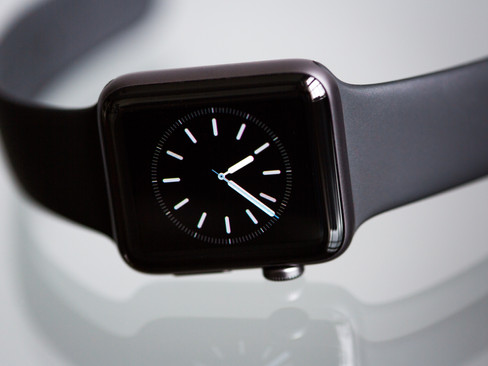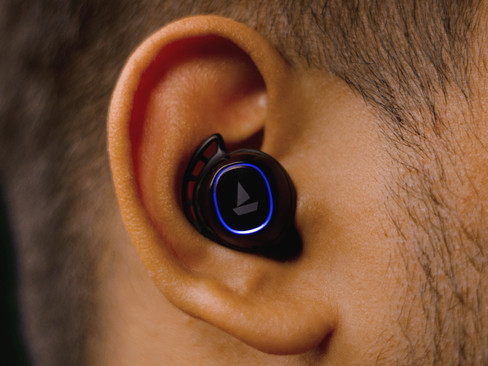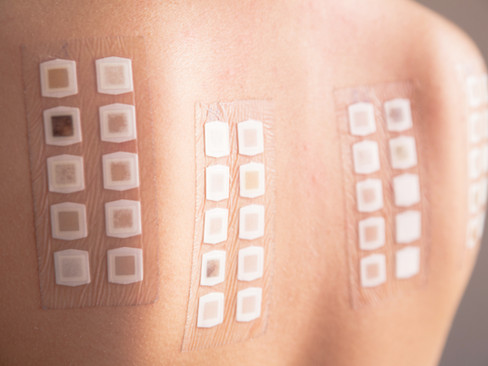Am I Allergic to my Wearable?!
- Bryan Cho, MD PhD
- Sep 1, 2023
- 5 min read
Updated: Jan 9
When I talk to companies about skin issues related to their device, I like to read what what concerns their customers have. Most companies have an open forum where customers describe their experience with the device and often share discoveries or insights which other users might find helpful. This is also where they might describe a negative experience with the device including skin-related concerns. One of the most common skin concerns users express is that they may have developed an allergy to their device.
Understandable.
Wear device. Get rash where it touches the skin. Rash goes away when the device is discontinued. Try wearing device again. Get rash. Rash goes away when the device is discontinued. Try wearing device again. Get rash...Lather, rinse and repeat.
Unhappy customer.
Is this the typical history of an allergic contact dermatitis? Possibly. But it could also describe a similar eczematous skin reaction called irritant contact dermatitis. These two conditions can look very similar and distinguishing between the two diagnoses can be challenging. In this post, we will take a deeper dive into the mechanism and ways to diagnose allergic contact dermatitis.
When a skin allergy has developed to a material or chemical, dermatologists call this Allergic Contact Dermatitis (ACD). ACD-type skin allergies are not that common. Wearable devices (especially those for medical indications) have to follow specific regulatory guidelines before they are released to the public. So in most cases skin allergens, toxins, or carcinogens are too low to cause problems. This is known as being Biocompatible. Biocompatibility is a formal set of rules that are supposed to be followed to keep consumers safe. But...sometimes things can slip through the cracks.
ACD occurs when your immune system develops an adaptive immune response to some chemical or material on the skin. The adaptive immune response is a specific branch of the immune system which can be "taught" to recognize specific targets. There is more than one type of adaptive immune response, the branch involved in ACD skin rashes requires an immune cell called a T cell. We have millions of T cells in our blood stream, organs and skin. Each T cell is programmed to recognize a different potential target, like a virus or other pathogen. When a target is recognized by a specific T cell, that T cell undergoes a series of internal changes that make it stronger and more robust. The activated T cell then creates many copies of the new and improved version of itself. The end result of these changes is to create a huge number of memory T cells which can respond faster and more strongly if the same target is ever encountered in the future. These memory T cells are pre-positioned throughout the body and skin and are poised to go on the attack if the target ever shows up. In this manner, once sensitized to recognize a specific target, your body is protected against future encounters with to that particular target. Medicine has harnessed this type of adaptive immune response to create vaccines that provide long-term protection against certain infections.
In an ACD skin response, the target recognized by the T cell is not a something that causes disease. Instead, the immune response is misdirected towards something non-pathogenic, usually some chemical or material that comes into contact with the skin. Whatever the adaptive immune system has erroneously targeted in this scenario is called an Allergen. Common skin allergens include metals, preservatives and fragrance. All the allergens associated with wearable devices have not been identified, but there are several allergens that have been identified through rigorous testing by teams of dedicated dermatologists and researchers. Part of my job is to review the medical literature so I can understand what type of contact allergens my clients should be aware of. I have compiled a database of allergens associated with medical and wearable devices. I will be presenting some of the information about contact allergens to avoid at Stanford University in October, 2023 at the Wearable Electronic Initiatives (eWear) Seminar Series.
What are some of the properties of an ACD-type skin irritation?
Once you are sensitized, the skin reaction occurs each time you wear the device. Allergies are forever, they don't typically dissipate or take vacations. Each time you wear the device, the skin reaction should occur. In fact, the more you are exposed to the allergen, the faster and stronger the skin reaction to the allergen tends to be
ACD-type skin rashes can be very exuberant. It is not unusual to see tiny water filled blisters 1-2mm in size. These can join together to form larger blisters. A poison oak/ivy rash is a prototypic ACD-type skin reaction
ACD-type skin rashes are ITCHY!
ACD-type skin rashes occur where the sensitizing material contacts the skin but usually spare the adjacent skin which does not contact the allergen. So if you were sensitized to the adhesive in a band-aid type dressing, you would see a rash where the adhesive touches the skin but not where the gauze contacts the skin
So when asked to evaluate skin reactions towards wearable devices, the details about how often the skin irritation occurs, what the affected skin looks like, what material(s) are present in the device, what components contact the affected skin and what the skin feels like are all important factors to consider when trying to make an accurate diagnosis of ACD and separate an ACD case from other non-ACD dermatoses. BOHLD has structured questionnaires that are designed to efficiently capture the information needed to make more accurate clinical diagnosis.
There are a number of tests that companies might consider when trying to identify if an allergen is present in their device. Whether these tests are necessary is something BOHLD could assist with.
Chemical Analysis: Extractables and Leachables Testing: This is usually a destructive test where the device is incubated in liquids with different polarities. The extracts undergo analytic testing to identify the different chemicals that are present and at what concentration. With this information, toxicity analysis can clarify if any of the chemicals are known toxins, allergens, irritants or carcinogens and if they are present at sufficient levels to lead to adverse medical outcomes.
Patch Testing: This is a three to seven day skin test used to screen or confirm whether an individual is sensitized to specific chemicals (see the back picture above). Purified allergens at concentrations validated to generate ACD (not irritant) skin reactions are placed on the skin and left in place for two to three days. The patches are removed and the skin in contact with each chemical is assess for specific skin changes (redness, blistering) consistent with an ACD-type reaction at different times (early and late response). Skin patch testing is the gold standard to confirm whether an individual is sensitized to specific chemical allergens. This type of test is typically performed by specially trained Dermatologists. One service that BOHLD offers, is the design of patch test allergens panels customized for your particular device and in some cases we may directly assist in administering and reading this test.
Use Testing: This is a specialized form of Patch Testing where parts of the wearable device or materials which make up some the device components (metals, adhesives, rubber, silicone) are directly placed on the skin to test if an allergen or irritant is present at sufficient concentrations to generate a skin reaction in sensitized individuals. BOHLD may assist in design, administration and reading of this test.
So to summarize, there are different ways to answer if a skin irritation is from an allergy (ACD) or from something else.
Clinical history
Appearance of the active dermatitis
Chemical analysis of the device
Patch testing
Use testing
Each of these bits of information are like clues to a mystery. Depending on the quality of the information, not all of these clues are always necessary to find the answer. But often, the more information at hand, the better and more accurate your conclusion is likely to be.
BOHLDs consultative services are here to assist if you have questions about the root cause of skin irritation your patients or customers might be experiencing.








Comments